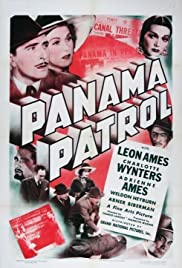
PANAMA PATROL
US, 1939, 67 minutes, Black-and-white.
Leon Ames, Charlotte Wynters, Adrienne Ames, Weldon Heyburn, Abner Biberman.
Directed by Charles Lamont.
Panama Patrol is an interesting espionage film, released in early 1939. In this screenplay, the Asian enemy seems to be China. However, almost 3 years later, the Japanese bombed Pearl Harbor in the US was involved in the war (with China, having suffered under the Japanese, as an ally).
The Panama connection does not come into the screenplay until the final minutes, concern being about coded photographed plates, they’re being transported by spies and agents, the result of their being put together revealing all the details about the fortifications of the Panama Canal.
The film is fairly brisk. Leon Aims, resuming a role he played in Cipher Bureau, 1938, along with the leading lady, Charlotte Winters, getting a marriage license at the opening of the film, getting a phone call that gets them back to work to decipher some documents. Abner Bitterman is the expert in the office for translations.
There are various tips, confrontations with potential agents, some of them getting murdered. Veterans Richard Kapalua and Philip are portray the Chinese.
The main tip involves going to a Chinese art shop where the proprietor is the coordinator of the espionage ring, aided by a very attractive assistance by, Adrienne Aims. There is also a hurried flight where the Chinese takeover, clashing with the Americans who eventually win and land the plane. In fact, there are various action sequences with Leon Ames being taken prisoner and having to be rescued. His fiancee is in the office, coordinating things, realising that there has been betrayal and that it is their translator who is the villain.
This leads to confrontations, shootouts, the rescuing of the fiance, the discovery that the plates will all to be superimposed to find the Panama fortifications.
The film is directed by Charles Lamont who also directed Cipher Bureau, a number of thrillers of this period but was to move into comedies, especially in the late 1940s and 50s with films of Francis as well as the Kettles.